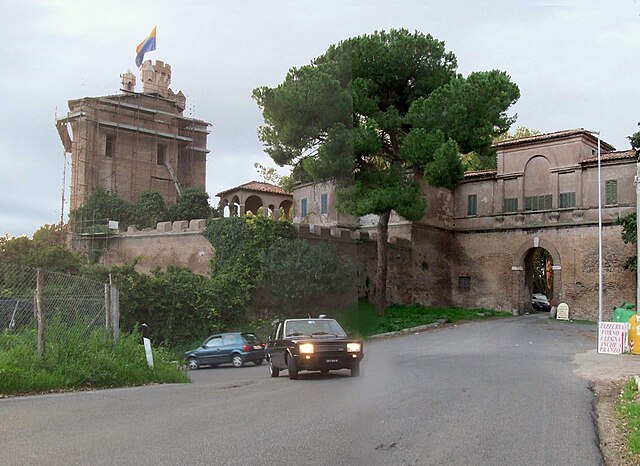Lavinium was a port city of Latium, 6 km (3.7 mi) to the south of Rome, midway between the Tiber river at Ostia and Antium. The coastline then, as now, was a long strip of beach. Lavinium was on a hill at the southernmost edge of the Silva Laurentina, a dense laurel forest, and the northernmost edge of the Pontine Marshes, a vast malarial tract of wetlands. The basis for the port, the only one between Ostia and Antium, was evidently the mouth of the Numicus river.
Gate into the interior of the settlement of the frazione of Pratica di Mare, a medieval walled village at the site of the center of ancient Lavinium. The structures in the photograph vary in date. On the left is the Castello Borghese, possibly the site of the Roman arx or citadel. The archaeological excavations are in a field off to the left of the photograph. The comune of Pomezia and the museum are directly behind the photographer.
Ex voto statues in the museum at Lavinium
Silver denarius struck by C. Sulpicius C. f. Galba in Rome 106 BC. The Di Penates depicted on the obverse were brought to Lavinium from Troy by Aeneas. The reverse depicts a prophecy from the Aeneid: "in the place where a white sow casts thirty piglets under an oak tree, a new city shall be built." A bronze statue of a sow was placed in the forum of Lavinium.
Not to be confused with Lithium.
Latium, Enric Serra Auqué, 1888. Biblioteca Museu Víctor Balaguer
Bust of Augustus wearing the Civic Crown. Glyptothek, Munich





